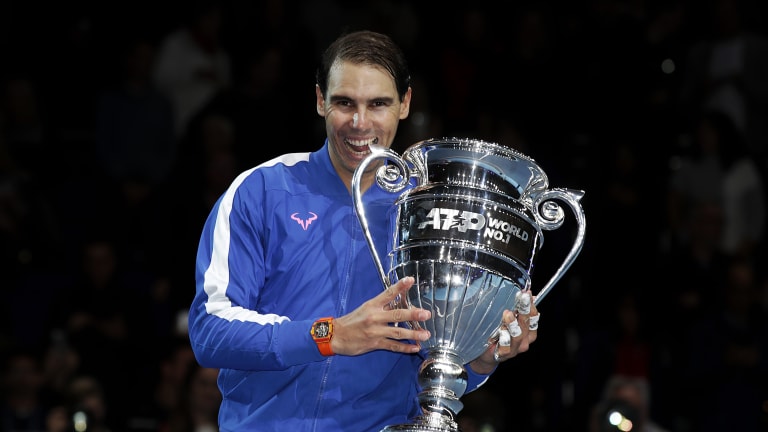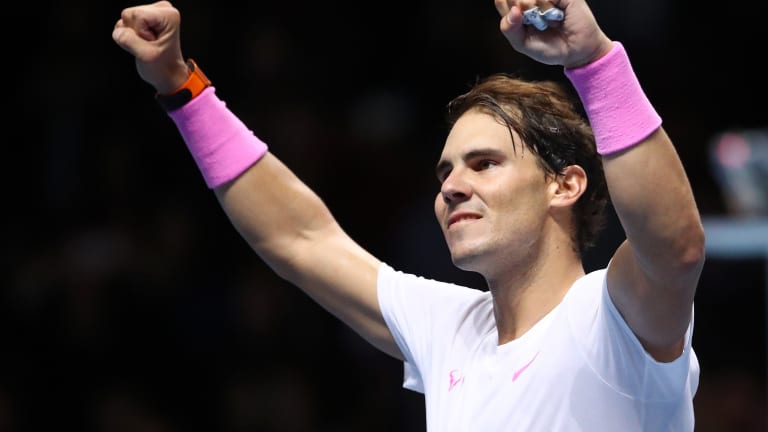ATP Finals
It wasn’t Rafael Nadal's body that we underestimated—it was his mind
By Nov 15, 2019ATP Finals
Wanted: Faster Courts
By Nov 20, 2023ATP Finals
Improving Jannik Sinner has his sights set on serving up more success next season
By Nov 20, 2023ATP Finals
New Era, Same Emperor: Novak Djokovic reigns supreme in Turin
By Nov 19, 2023ATP Finals
Record-breakovic! Novak Djokovic defeats Jannik Sinner for historic seventh ATP Finals title
By Nov 19, 2023ATP Finals
Novak Djokovic vs. Jannik Sinner: 2023 ATP Finals Championship preview
By Nov 19, 2023ATP Finals
Novak Djokovic shows Nick Kyrgios the commentator why he's the "best player to ever touch a racquet"
By Nov 18, 2023ATP Finals
Djokovic dispatches Alcaraz at ATP Finals to set up title match against home favorite Sinner
By Nov 18, 2023ATP Finals
Novak Djokovic beats Carlos Alcaraz in straight sets in battle between No. 1 and No. 2 at ATP Finals
By Nov 18, 2023ATP Finals
Jannik Sinner defeats Daniil Medvedev to reach biggest final of career at ATP Finals
By Nov 18, 2023ATP Finals
It wasn’t Rafael Nadal's body that we underestimated—it was his mind
Years after many of us thought he would be retired, Rafa is the oldest year-end No. 1 in ATP history for a second time.
Published Nov 15, 2019
Advertising

It wasn’t Rafael Nadal's body that we underestimated—it was his mind
© Julian Finney/Getty Images
Advertising

It wasn’t Rafael Nadal's body that we underestimated—it was his mind
© Julian Finney/Getty Images